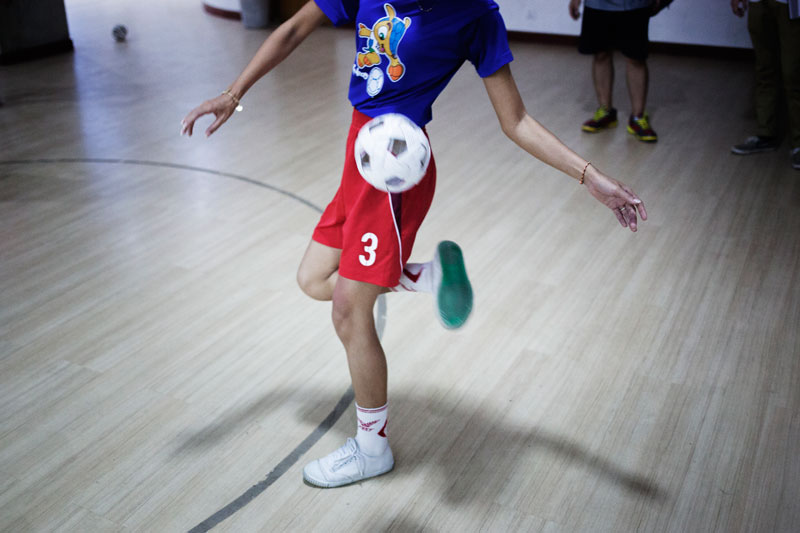Standing in a circle and kicking around a small, woven ball, sepak takraw players on the riverside, outside high schools or in other public spaces in Phnom Penh often draw a small crowd.
And depending on the day, Cheat Khemra may be watching, scouting for players who might help further the national team’s success on the international stage.

Mr. Khemra, 36, coached the team that came away with a rare gold medal at the SEA Games—in the chinlone linking event, a competitive version of team juggling—and continues to search the city for fresh talent.
“I personally have to convince the players—I meet most of them…in Tuol Kok district or on the riverside in front of the Royal Palace—then we will arrange separate training for normal players and national team players,” he said in an interview earlier this month.
Having played on the sepak takraw national team himself from 2005 to 2013, Mr. Khemra’s strategy for Cambodia’s national side is quite simple.
“Players must practice a lot, and have to learn to work together as a team.”
And his vision for the future is rather modest.
“Our goal and ambition is to keep our position in the SEA Games, or if not, to keep playing in the SEA Games,” he said.

While chinlone linking is a decidedly casual sport—a circle of six players kicking up a ball as many times in a row as possible during a 10-minute period—traditional sepak takraw is a frenetic sport filled with acrobatics, similar to volleyball but with the players only allowed to use their feet, chest and heads to keep the ball in play and kick it over a net dividing the teams.
At a practice at the National Olympic Committee of Cambodia’s indoor gymnasium earlier this month, the traditional sepak takraw players were left to their own devices as Mr. Khemra gave his attention to the women who comprise the female chinlone linking squad.
Players from the gold-medal men’s team spent time kicking the ball back and forth using different techniques and from different angles. As the practice wore on, the players became increasingly attuned to each other’s movements, seemingly able to read their teammates’ minds.
One of the stars of the squad is 25-year-old Riem Sokphirom, who has excelled in the sport since turning his attention from football in 2007 at the suggestion of his brothers, who saw that his foot skills would suit sepak takraw.
“Sepak takraw has really interesting jumping, and has different styles,” he said.
Since the national team started returning from international competitions with medals, Mr. Sokphirom said, more young Cambodians have taken an interest in the sport.
“Now I see many youths are interested when we post on Facebook,” he said. “The team wants more people to be excited about sepak takraw—a lot [of people], like soccer.”




